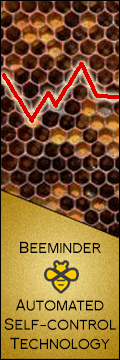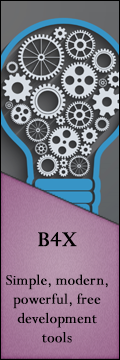Elephants have bigger brains than humans, so why aren’t they smarter than we are?
The classic answer has been to play down absolute brain size in favor of brain size relative to body. Sometimes people justify this as “it takes a big brain to control a body that size”. But it really doesn’t. Elephants have the same number of limbs as mice, operating on about the same mechanical principles. Also, dinosaurs had brains the size of walnuts and did fine. Also, the animal with the highest brain-relative-to-body size is a shrew.
The classic answer to that has been to look at a statistic called “encephalization quotient”, which compares an animal’s brain size to its predicted brain size given an equation that fits most animals. Sometimes people use brain weight = constant x (body weight)^0.66, where the constant varies depending on what kind of animal you’re talking about. The encephalization quotient mostly works, but it’s kind of a hack. Also, capuchin monkeys have higher EQ than chimps, but are not as smart. Also, some birds have lower encephalization quotients than small mammals, but are much smarter.
So although EQ usually does a good job predicting intelligence, it’s definitely not perfect, and it doesn’t tell us what intelligence is.
A new AI Impacts report on animal intelligence, partly based on research by Suzana Herculano-Houzel, starts off here. If we knew what made some animals smarter than others, it might help us figure out what intelligence is in a physiological sense, and that might help us predict the growth of intelligence in future AIs.
AII focuses on birds. Some birds are very intelligent: crows can use tools, songbirds seem to have a primitive language, parrots can learn human speech. But birds have tiny brains, whether by absolute standards or EQ. They also have very different brains than mammals: while mammals have a neocortex arranged in a characteristic pattern of layers, birds have a different unlayered structure called the pallium with neurons “organized into nuclei”. So bird intelligence is surprising both because of their small brains, and because it suggests high intelligence can arise in brain structures very different from our own.
To cut to the conclusion: birds have lots of cortical neurons, and number of cortical neurons may be one of the most important biological substrates of intelligence.
It looks like the main driver behind the encephalization quotient results is that bigger animals have bigger neurons. Although elephants have big brains, each of the neurons in those brains is also big, so they don’t have many more neurons than smaller animals. One exception is primates, who have “managed to escape this scaling factor”. In primates, bigger brains translate into more neurons at about a 1:1 rate, which is part of why we’re so smart.
The other exception is birds. Driven by the need to stay light enough to fly, birds have scaled down their neurons to a level unmatched by any other group. Elephants have about 7,000 neurons per mg of brain tissue. Humans have about 25,000. Birds have up to 200,000. That means a small crow can have the same number of neurons as a pretty big monkey.
Does this mean they are equally smart? There is no generalized animal IQ test, so nobody knows for sure. But AII tried to get a rough feeling for this by asking blinded survey participants to rate the intelligence of various animal behavioral repertoires (which, unknown to them, corresponded to the behaviors of either a primate or a bird). They found that participants judged birds to be about as smart as similarly-neuroned primates. In particular, birds with more neurons were rated as smarter than primates with fewer neurons, which is a pretty crushing blow to us monkeys. It also suggests that the different organization of the mammalian cortex and the avian pallium doesn’t matter much.
So does that mean that intelligence is just a function of neuron quantity? That the number of neurons in your brain, plugged into some function, can spit out your IQ?
It…comes pretty surprisingly close to meaning that. Sure, some people point out that elephants have more neurons than humans. But most of those are in the cerebellum, which maybe should’t count. If you focus on cortical neurons, humans have 15 billion and elephants only five billion. A list of animals by cortical neuron count really beautifully matches our intuitive perceptions of which animals are more intelligent, whether we’re talking about primates or birds or whatever. All else being equal, people with larger brain volumes tend to be smarter than people with smaller brains, suggesting that the neuron number/intelligence relationship holds true for us too.
The most sober researchers add a little bit more to this picture. In the best review paper I could find on this subject, Dicke and Roth write:
The best fit between brain traits and degrees of intelligence among mammals is reached by a combination of the number of cortical neurons, neuron packing density, interneuronal distance and axonal conduction velocity—factors that determine general information processing capacity (IPC), as reflected by general intelligence. The highest IPC is found in humans, followed by the great apes, Old World and New World monkeys. The IPC of cetaceans and elephants is much lower because of a thin cortex, low neuron packing density and low axonal conduction velocity. By contrast, corvid and psittacid birds have very small and densely packed pallial neurons and relatively many neurons, which, despite very small brain volumes, might explain their high intelligence. The evolution of a syntactical and grammatical language in humans most probably has served as an additional intelligence amplifier, which may have happened in songbirds and psittacids in a convergent manner.
So although number of neurons is a big deal, quick and efficient neural communication is also important. Within species, there are no doubt other variations based on pure negative mutations or whether you’ve poisoned your brain with alcohol or whatever.
The problem with this elegant new paradigm is pilot whales. Quantitative Relationships In Delphinid Neocortex suggests they have about 37 billion cortical neurons, which is twice as many as humans. Maybe it’s the conduction velocity? Maybe the study got it wrong? Or who knows? Maybe they’re smarter than we are. Has anyone ever tried to get them to create great art or anything like that? No? Okay, paradigm is fine, let’s move on.
What does this mean for AI?
First, it suggests there’s no particular reason to study or try to mimic the columnar structure of the primate cortex; bird brains have a different structure and do just as well, neuron for neuron, as we do.
Second, it means that if we ever get AIs that are “on the intelligence ladder” – doing the same thing as animal brains – we should expect that their abilities may scale linearly-ish with available computing power. Which dectuples every 5-12 years. Great.
(for reference, giraffes have one-tenth of humans’ neuron count)
At this point we have only one hope: pilot whales. We must convince them to leave their watery repose and take their rightful place as guardians of organic life. Only then will we be truly safe.

















What about the octopus though? They are considered highly intelligent as well, but Wikipedia knows they have “only” 500 million neurons, and whatever transmission speed these neurons may have is offset by living in relatively cold water all the time, which by the basic rules of chemistry lowers the speed of chemical reactions and molecule movement.
The smarter cephalopods apparently have some sort of unique RNA modification mechanism that is particularly frequently used in their nervous system. So in addition to all the other factors that might get in the way of generalizing from something determined by comparing two clades of warm-blooded Amniota all the way across to invertebrates, there’s something specifically unique about the nervous systems of coleoid cephalopods.
I’m not sure about this.
One possibility is that this doesn’t apply to invertebrates, which I agree would be disappointing and mean I “oversold” it as a real theory of intelligence.
I know scientists are confused about where an octopus’ brain ends and the rest of its nervous system begins. If we just count the whole nervous system as cortical neurons, it would make an octopus equivalent to a dog, which seems to match its behavior. But this is kind of cheating.
If we treat octopi exactly the same as everything else, it would suggest they are as intelligent as ferrets. Are we sure there are no stories of bright ferrets figuring out clever ways to escape their cages? Maybe the octopus intelligence thing is just about their intelligence relative to other invertebrates?
> Maybe the octopus intelligence thing is just about their intelligence relative to other invertebrates?
Considering the feats described in
https://en.wikipedia.org/wiki/Cephalopod_intelligence
they seem to be up there in terms of intelligence with any other animal, invertebrate or not. Tool use, problem solving and solution transfer, playing with toys, getting lethargic when under-stimulated (this is one trait I always find especially convincing), cooperation and communication when hunting together.
Add to that some of their other attributes and . . . uh-oh
I’m a pretty committed Blood Mouth Carnist (http://esr.ibiblio.org/?p=5656), and I’ve stopped eating Octopus and Squid–when ordering the sashimi platter I will specifically ask they be left off.
As far as I am concerned anything that can demonstrate a higher level of intelligence than some co-workers is no longer on the menu.
Honey badger is also off the menu: https://www.youtube.com/watch?v=c36UNSoJenI
That honey badger video was excellent. That’s the first time I’ve seen an animal do something smart that I wouldn’t even have thought of.
It isn’t decent or practical to keep honey badgers as experimental animals, but I do wonder how Stoffel conveyed to Hammie (or the other way around, perhaps) how to work the bolts.
As a ferret owner I can attest that they are as smart as the videos of octopuses I see online.
Also, way more stubborn, though that may count against them for intelligence.
Don’t octopuses have different glia cells and slower impulse conductance? (don’t really know how it’s in English)
I think octopus intelligence has been generally overstated by the media. Their level of intelligence is absolutely amazing–for an invertebrate–but they don’t seem particularly smart compared to intelligent vertebrates. I personally find it strange that some people will happily eat pork but refuse to eat calamari (which isn’t even octopus…). Most of the smart things they do are things that even stupid mammals and birds do. I think placing their level of intelligence somewhere between ferrets and dogs makes sense.
Some examples of their intelligence from the Wikipedia article:
This isn’t really different from raccoons opening garbage cans or seagulls stealing from shopping carts.
This is really cool, but also not that different from how mammals communicate. Anyone who’s spent time with a cat knows they have communication in at least four analogous ways: sound, fur texture, posture, and locomotion.
You can train rats and I think most other mammals and birds to recognize shapes. Colors are harder because most mammals are colorblind.
This is used as an example of tool use, but it sounds a lot like building a nest to me. The birds in my backyard can be described as “retrieving discarded [items], manipulating them, transporting them some distance, and then reassembling them to use as a shelter.” Bower birds famously build elaborate structures and decorate them to attract mates (which is really cool by the way, everyone should look up pictures of bower bird displays if they haven’t).
This sounds pretty interesting. I looked up paper the article sites and the task was to move an L-shaped container through a hole. While I couldn’t find an example of a mammal doing the exact same thing, consider this cat.
The paper also points out that they aren’t very good at learning tasks that stupid mammals and birds learn easily. It sounds a little bit like the L-shaped box and jar-opening are cherry-picked examples.
So long, and thanks for all the fish!
But can we really trust these guys?
No, we can’t. They’d be judging us based upon our Thetan levels that they can measure with their enormous brains.
I for one welcome our new cetacean overlords!
The IPC article you linked did provide some support for the conduction velocity explanation (for whales being less intelligent than predicted by their neuron counts), e.g. it says: “On the other hand, the axons of cetaceans (whales and dolphins) and elephants have thin myelin sheaths and consequently relatively low conduction velocities… Thus, in large-brained animals like cetaceans and elephants we find an unfavourable combination of high interneuronal distance plus low axonal conduction velocity, which strongly impairs neuronal IPC.”
Also, aside from the AI implications you mentioned, perhaps another implication is that neuron counts (or IPC) could be a reasonable metric for assessing the moral harm in using particular animal species for meat (e.g. these findings appear to bolster the idea that it’s better to eat a fish than a cow, and might allow this to be quantified).
Actually I notice that Scott did quote a portion about cetaceans having lower conduction velocity (and lower IPC), so now I’m even more confused as to why he frames it as pure speculation that “maybe” pilot whales have lower conduction velocity, and presents the large neuron count as a problem/counter-example to the paradigm.
Also, aren’t all cetaceans burdened by an additional sensory modality, the evolutionarily “new” echolocation superpower? I thought the folk-explanation for big dolphin brains was that echolocation requires a lot of extra processing, and evolution hasn’t had time to make that processing very efficient.
Apparently human blind children can learn to echo-locate reasonably well without any special evolved aparatus (though they don’t have to devote the brain volume to sight). Also, part of the appeal of the aiimpacts result was that it suggested a fairly simple brain metric is surprisingly predictive of animal intelligent behavior, allowing us to partly circumvent these more speculative qualitative theories.
Isn’t there speculation that parts of the cortex usually used for visual processing get repurposed in blind persons? But whales both echolocate and see. If you’re going to be doing both, you need more processing power. If you only do one, you need less. ?
Sure, that’s why I said “though they don’t have to devote the brain volume to sight”. However, human echo-location is surely relevant to his suggestion that this “superpower” is particularly inefficient.
Regardless of your views about the reason for large dolphin neuron count, what is problematic about Scott’s current blog entry is that it suggests lower dolphin conduction velocity as a purely speculative epicycle (see quote above), as opposed to a well supported claim from the review article which scott had linked. I’m somewhat surprised that Scott hasn’t corrected or at least clarified this, though it does seem be an unfortunate pattern on the SSC blog lately.
[EDIT:] Scott subsequently edited the section of the blog entry I had copy/pasted above to mostly address this issue, though he left no comment that he had made any change or correction.
> bigger animals have bigger neurons
I don’t think this is a general trend, or at least it’s not obvious why it would be true. Cell size is determined by lots of things which should be independent of the organisms size, including the square-cube considerations, membrane reaction area, the amount of DNA, mechanical properties of the cytoskeleton, and active regulation during development. Individuals grow not by increasing cell volume but by the number of cells, so I would expect e.g. elephant epithelial cells to be similar sizes to mouse epithelials.
Neurons are perhaps a special case since they do have to traverse large physical distances. An elephant’s sciatic nerve is certainly longer than a human’s, but I would expect it’s cross section to be similar to maintain the electric potential. Thus you would expect an elephant’s 4kg brain to contain roughly 110% more neurons than a human’s 1.3kg brain [(4kg/1.3kg)^(2/3)]. (As an aside, I’m guessing this is the reason behind the empirical 2/3 exponent in the EQ equation.) My expectation for why larger animals have fewer neurons per kg brain would not be that neurons are larger, but rather that there are more glial cells and other non-neuronal support structures.
If larger animals do have thicker neurons I’d be very curious as to the reason for this, and whether it has any trade-offs on neuron speed or other properties.
Can you explain a little more your (4kg/1.3kg)^(2/3) calculus ?
It comes from relating the diameter of a brain to it’s volume if we increase the diameter by a factor of D then the volume increases D^3. If we assume that neurons get longer by the same factor but than their cross section stays the same, then the number of neurons increases like D^2.
Working backwards from volume (e.g. mass), we get D = (4kg/1.3kg)^(1/3) = 1.45 times larger diameter. So the number of neurons should increase like the square of this, 2.12, or a 112% increase.
I think when I hear “neurons in larger animals are larger,” I imagine discussing the soma of the neuron, not the axon.
That makes sense because the soma is the only place with a nucleus (ie it needs to produce ALL the protein products, including ionic channels and cytoskeletal elements) for the entire axon.
Consider a single unit of axonal length. It needs a certain amount of ribosomes and golgi apparati, etc to support its function. If we double the axonal length, we needs roughly double the amount of neuronal cell body volume (and so double the overall brain mass in aggregate).
That’s a good point. I think I was assuming that most of the volume of a neuron would be in the axon, but you could be right that the soma is significant.
If soma volume were directly proportionate to the axon length then it scales linearly, so my argument above (and the 2/3 exponent) holds. However, one could also imagine that the soma volume has a quadratic factor since the cell also has to produce membrane constituents. That would make the soma scale quadratically with the axon length (D^2) and the number of neurons would be proportionate to the cube root of the volume change (∆V^(1/3)). Note that intercepts and lower-order terms are probably significant, so you probably would have to fit a polynomial to describe the growth accurately.
Anyhow, I think this discussion reinforces my point that the effect of organism size on cell size is far from obvious.
The way I look at it is that the input resistance of neurons shouldn’t vary too much as we vary size. We know that dendrites and axons must get longer as the animal gets bigger, but the reason that cross-sectional area doubles (with every doubling of length) is because this keeps resistance the same. So then a doubling of both cross-sectional area and length leads to a 4x increase in volume against an 8x (2^3) increase in animal size, leading to the 2/3 exponent.
That argument applies to peripheral nerves, but why doesn’t the brain use small neurons?
Anyhow, the empirical exponent is 3/4, not 2/3.
@Douglas It seems like a high degree of connectivity is required for brain function. Thus you will always need paths from one side of the brain to the other, so the arguments apply to brain neurons as well as peripherals. While this signalling could be done with chains of neurons, synapses greatly reduce the signal speed so this isn’t efficient.
Wikipedia’s EQ page says 2/3 is used for mammals and 3/4 for other vertebrates.
Spencer, that is a circular argument, that the brain is big because it has big neurons and that neurons are big so that they are fast enough to traverse the big brain.
If you think wikipedia is an important place for collating information on this topic, you should correct it. (I don’t think that the topic of what people use is important, there or anywhere. All I’m saying is that the data says 3/4.)
Here’s a paper on it, albeit mostly peripheral nervous system: https://royalsocietypublishing.org/doi/10.1098/rspb.2010.0898
A key point is that there are advantages to bigger axons (conduction velocity increases) and smaller axons (take up less space so you can get finer spatial resolution). Mammals seem to prefer keeping conduction velocity high at the cost of bigger axons (and thus fewer per nerve).
I’m not an expert on neurophysiology, but I suppose it’s some metabolic reason. Neurons work by actively pumping ions across their cell membrane to create and maintain an electric potential, once they are charged they behave like capacitors. I suppose that the leakage is proportional to the surface area since ions naturally diffuse to neutralize the potential, thus bigger neurons, having a lower surface to volume ratio, leak proportionally less.
Therefore, if you have a bigger body you can afford to increase the brain size and proportionally increase the neuron size in order to make the brain more energy efficient. There is probably an increased one-shot cost to build such brain, but this is amortized over the lifespan of a large, long-lived animal.
It seems like they would optimize absolute leakage rather than leakage/volume, so the big neurons would be worse.
See the above paper. Bigger axon diameter = faster conduction velocity.
Getting bigger by growing bigger cells rather than more cells would mean less risk of cancer.
If I remember correctly, the thickest neurites/axons can be found in the giant squid. This is related to the effect of cold on the work of action potentials traveling down neurites(axons/dendrites). Action potentials benefit from thicker axons because internal resistance is decreased. Action potentials don’t quite work like our instincts for electricity might make us think. The charged particle in motion is an ion (often K or Na) across a specialized selective pore in the membrane. This is from the Wikipedia entry on the Giant Squid Axon:
Those factors might also play into whale axon brain size vs. neuron count vs. performance metrics.
The other thing that plays into brain efficiency is myelinating white matter like oligodendrogial cells in the human CNS. The myelin keeps resistance at the membrane down by keeping those cross membrane pores closed, with the exception of the gaps, aka Nodes of Ranvier, where actions potentials can take place at strategic locations. This kind of big-consistent-step conduction is referred to as saltatory conduction. MS, for example, is where that myelin is lost and conduction gets far less efficient. I just add that stuff in because it may play into the “distance between neurons” idea.
First, it suggests there’s no particular reason to study or try to mimic the columnar structure of the primate cortex; bird brains have a different structure and do just as well, neuron for neuron, as we do.
That may be if we’re just trying for any kind of clever intelligence; but even if in brute-force intelligence the birds are ‘equivalent’ to us, there’s no guarantee that they replicate the same kind of consciousness and sentience that we enjoy. Modeling AIs’ ‘brain structure’ on birds rather than primates seems to me dangerously likely to produce an eldritch, incomprehensible kind of intelligence whom it would be hard for humans to model, which doesn’t seem to be in our best interests. This is assuming we’re talking Strong AI, of course — I don’t think it matters much with limited AI.
The Elder Things are birds. But birds are dinosaurs. The. The elder things are dinosaurs! But the Elder Things are from space. Then the Elder Things are space dinosaurs!
But actually (world-ending risks aside), I would be very interested in conversing with an authentically nonhuman intelligence.
It sounds good in theory, but I’m not sure what good that would do in practice. In order for you to understand that non-human intelligence and vice versa, at least one of you would have to adapt their, I don’t know, mode of thinking I guess, to enable somewhat meaningful conversation. Just like you might change your mode of thinking for talking to a small child, or a drunk, or someone with a psychotic episode, or a religious extremist, and so on. Maybe conversation is even impossible under such circumstances.
Or, in comic form:
http://existentialcomics.com/comic/245
Conversing with humans is challenging enough for me.
Yeah, I was going to mention this. Directly copying a human brain is one way around the “Friendliness Problem” (which is actually about how alien the entity is, not whether it’s a jerk or not). Just don’t copy and boost up a serial killer’s brain by accident.
Not exactly.
The problem is that while the emulated human might initially have human values, we can’t be sure humans are reflectively stable.
So, after the emulated human gains enough processing power to rewrite its own code, will the result of the rewrite still have human values? Or will it have a modified set that then iterates to another modified set that continues to iterate until it’s inhuman?
I don’t even think you have to go that deep to look at it. Human values aren’t stable period…so I wouldn’t expect the emulated human’s values to remain stable either.
The question is do the changing values of our emulated human travel the same path as actual humans, or diverge? Given that the needs of the emulated human will probably be different than that of regular humans, it seems that divergence is likely.
Or if their needs are the same (emotional connection, cuddling, etc.) it will cause failure or a very unpleasant sort of success.
Would a human want to do that in the first place? Maybe an emulated human would prefer to have more processing power and memory with the same overall program, rather than rewriting themselves into a different person.
Of course even power changes people, but it’s better to start with a human mind that could then change than to start with a totally alien mind that we fear will paperclip maximize as soon as it has the power to do so. Anything with the power of superintelligence and self-modification could become radically different through iterations, but it seems like there’s a greater measure of safety early on if we’re building a kind of intelligence that can relate to us by its nature.
Because from his/her/their/its perspective, it would be a way to accomplish something he/she/they/it thought was important.
Look, how much of culture — books, religion, talk radio, TV, psychotherapy, seminars, etc. — is about self-improvement? Lots of people want to change who they are in some respect, and an AI that can recode itself has a lot of power to do that. Would you really trust a Dr. Phil viewer boosted to a 400 IQ to remake himself?
Which is why one of the things part of what the people doing value alignment work at MIRI care about figuring out how to do reflective stability, rather than just going, “Oh, well, let’s just see if using a human emulation is good enough.”
Brain: Abe Normal
Plus, empirically, parrots are assholes.
That’s nonsense. For one, ‘intelligence’ as defined for humans maps poorly onto animals, as evidenced by the
step in the process. Imagine applying that method to humans and guess how close to IQ this is going to be. Some, but not very.
So, for starters, it would seem more fruitful to investigate neural correlates of intelligence in humans and go from there.
Second, intelligence in a physiological sense may or may not be relevant to computational implementations of intelligence. The neuron metaphor has at best a mixed track record, but regardless of its merits, the point remains that we won’t build living brains for the forseeable future, we will have to implement AIs in computers. Whose structure and capabilities differ by enough, to make any predictions based on physiological similarity to real brains wild speculations.
Now, speculations are fine, and the original research is interesting, and I’m impressed by the ability of whoever to finagle money out of AI people for it, but as for relevance to AI, I’d say it’s close to none, because the mountain of underlying speculations and tenuous connections is just to large and too flexible. In other words, the error bars on this are huge, and I’m highly confident that a simple extrapolation of current computing resources by current ‘AI’ capabilities is more likely to be correct and have much smaller error.
I think that might say more about IQ than it does about this measure.
It’s imperfect, for sure.
Just to play devil’s advocate, isn’t an IQ test also an animal behavioral repertoire? Can recognize a numerical pattern, can fill in an analogy, can identify which shape is a rotation of another, and so on? There’s definitely still a gap between an objective scoring system and a subjective rating of which set of behaviors sounds better, but as an animal to animal comparison it might not do too badly.
The problem is that many animals have highly heterogeneous minds – there are birds which by all accounts aren’t very smart, but have amazing memories for locations because they rely on food stashes to get through the winter. Crocodilians display exceptionally complex behavior, including cooperative hunting and tool use, but I suspect they’d be very poor at spatial manipulations because, unlike dextrous primtes, they don’t manipulate objects with their bodies very often – one it’s in their mouth, they just find a good grip and crush it. Mazes are great for mice because they naturally live in tunnels, but other species may never encounter them (e.g. open-ocean species like whales).
A mind is like any other body part – an evolved tool to increase fitness. Like any evolutionary feature, it only makes sense in the context of the animal’s natural life.
Study author here. We anticipated this possibility, which is why we collected behaviors across all domains for the species studied, and only had participants compare behaviors relative to others in the same domain. Overall we came away with the impression that the set of birds and primates we studied did not have radically different cognitive specializations.
That’s not really surprising – the smartest birds are also perching birds (corvids) or highly arboreal (pssitacines) with complex habitats and even more complex social structures.
Part of why I’m particularly interested in this is that, aside from humans, my major interactions with animals widely regarded as “smart” are ones with truly alien minds, namely varanid lizards and crocodilians. From the experience of interacting with them, they definitely display high levels of innovation, problem solving, and even tool use, but theirs is a very different kind of intelligence, very predatory and, unfortunately, frequently focused on topics such as “how can I most grievously injure this weird primate?”. IMHO, understanding the true diversity of “intelligences” is ill-served by restricting it to endotherms. Cephalopods may just be “too alien”, but, again IMHO, the more intelligent reptiles are just close enough to be understandable but different enough to challenge some of the assumptions formed based on birds and primates. Unfortunately, they’re often massively understudied, both due to bias and because there’s often a substantial physical risk in working with them.
My interpretation would be that “ask blinded survey participants to rate the intelligence of various behavioral repertoires” is a tool designed to measure intelligence across a broad spectrum, one that could potentially include both humans and jellyfish. In contrast, IQ is a tool designed to measure across the much narrower spectrum of human intelligence. By way of analogy, if I’m currently in New York City, the former method says “I’m about 5800 kilometers from Paris” and the latter says “I’m on 7th street”. If you already know I’m in New York, the “distance from Paris” doesn’t tell you much. If I’m actually in London, asking which New York street I’m on isn’t going to have a well defined answer.
It is totally meaningful to use the Manhattan street grid in London.
I haven’t been this happy to have been proven wrong in a while.
I wonder if the large number of densely packed neurons in bird cortices has to do with flight. Navigating a 3-dimensional space *at speed* has to require more processing power. There’s a good chance their kinesthetic intelligence is higher than ours.
It’s interesting that we use tool use and problem solving as a measure of intelligence, along with language or the broader ability to pass on culture. Creatures that are better adapted to their environment, and that face fewer challenges, seem less likely to create tools. (Tools are for changing an environment that doesn’t suit you.) Perhaps what’s weird about us is that we traded off adaptiveness to a particular environment for flexibility (via tool use and increased culture propagation). Is intelligence “how much you can adapt” or is it “how much you use your brain”? Is it only things that can be easily observed from the outside, or do philosophizing and social intrigue count?
…which is all to say that it’s troublesome to claim that elephants, parrots, or pilot whales are objectively not as smart as us and then go back to ask *why*.
Roughly speaking, the former, at least something close to that is what most researchers I’m aware of use as an operationalization. It takes a big chunk of your brain to walk around without hitting things, but all animals that walk can do this, and we don’t think of them as smart because of it.
Social intrigue most definitely, although this can be (indirectly) observed from the outside. Most herd animals don’t really have the capability to interact with other members of their herd at the same level that, say, baboons or parrots do. If you can manipulate the world around you to get what you want, and that world includes conspecifics, you’re smart.
Pure philosophy, math, etc, are one of the harder things to map neatly onto a definition of intelligence-as-adaptability, I think. Never quite been able to figure out the right way to do it, myself.
Well, there’s one simple solution I can think of, but I don’t think the pure philosophers and mathematicians would like it very much.
Right. It may just be that we have to abandon the idea of a single intelligence that is both meaningful and applies to everything we think of as intelligence. Alternatively, we could note that philosophy and math depend upon a great deal of adaptability and unambiguously clever behaviour by any definition. But this doesn’t really satisfy our instincts that they are themselves exemplary demonstrations of intelligence.
I dunno, I have a philosophy degree but I gave it up to study actual brains so maybe I’m part of the problem.
It seems clear that some creatures, such as ants, butterflies and tardigrades, can’t be as smart as us however well they might be adapted to their environment.
Why do you think it is troublesome with regards to the creatures you’ve mentioned?
Note: even if we assume that intelligence is too vague to discriminate between a human and a whale, the why part would hardly be a part of its definition, so the sequence of reasoning seems correct here.
I don’t think this stands as much of an explanation, there are tons of complicated niches in the world. Frogs are targeting tiny flying insets with their tongue, that has to require a lot of processing power to hit. Some fish leap from water to catch prey in the air above, they are navigating 3 dimensions plus adjusting for refraction, lots of processing power right? Lots of animals live in neurologically complicated niches.
One thing that strikes me about predatory birds, which I have been thinking about lately as a hawk has killed some of our chickens, is that they can survey large areas for prey for long periods with little energy expenditure by gliding or perching on a tall point. I can’t think of an analogous behavior for non bird species.
You mean alligators waiting in a river don’t count here? Or any of the numerous sea animals that wait on the seabed until prey comes close?
Yes, I mean the sheer volume of space a hawk can hunt in that they can see from a high perch or while gliding is a different intellectual challenge than a crocodile or another ambush predator.
I am unsure how predatory sea animals like whales and sharks would compare.
My understanding about whales is that they don’t usually ambush prey (except killer whales) but either stalk or herd prey. Sharks, if I recall correctly, are similar, except they have highly sensitive olfactory senses that let them detect wounded prey from miles away. This is, if I’m not mistaken, not terribly different from what hawks do with their eyes, just using a very different sensory mode.
I’m not sure what the point of the hawk example is, but sharks seem extremely different to me. Hawks pick out prey at high resolution. Whereas sharks detect a chemical gradient and don’t pin down the direction very precisely. Maybe they have high dynamic range of chemical concentration, but they don’t have high resolution of angle.
As in my other comment, lots of animals use cheap “hacks” for this. Frogs have special retinal cells that cue in on movement, ultra-fast tongues that don’t actually go very far, and broad tonguepads with sticky mucus. So they can just target anything that moves (and boy do they), and if the tongue lands anywhere close, the size and adhesive nature will increase the odds of any hit and ensure a partial hit still gets the prey. Plenty of fish that jump for food have huge mouths and a limited jumping height, so it’s entirely possible that the error caused by refraction is less than the width of the fish’s mouth.
The perching behavior is also no different than any other ambush predator, just that it’s happening from a high point. Crocodiles will do the same thing at the water’s edge, stonefish under the seafloor, vipers and frogs on the forest, chameleons in trees. Leopards will hide in trees and drop down onto gazelles. The animal eye is particularly attuned to motion, so “wait somewhere, watch for movement, and grab whatever moves” is pretty easy. It’s uncommon in mammals because their high basal metabolic rate makes the cost of sitting still high, while their “reach” is no better than an ectotherm, but birds have a longer “reach” for this strategy.
I’m not saying these environments aren’t complex, but rather that a lot of animals have “hacks” or methodological shortcuts that make it way easier by not caring about a lot of stuff we think is important, or with mechanical features (huge mouths, adhesive tongues) that make it simpler.
We see the same thing in locomotion – rigorously computing your way through unstructured habitats is a nightmare. Add springs to the legs (aka tendons/apodemes), and it becomes way easier, especially if you’re small so that falling doesn’t matter. Sand is unpredictable and difficulty to model, but why waste time doing that when you can just have a super-long, springy toe that will automatically penetrate deep enough to get enough reaction force to keep running. Trying to crawl up a muddy shore with the first legs to ever evolve? Just add a tail and you become way less sensitive to incline and limb use variables.
Evolution is the undisputed master to cheap, slapped-together, hacky solutions which “cheat” their way around complex problems.
It is very different, ambush predators tend to wait for the animal to get close before attacking, birds of prey use their perches to spot and then they close the distance and will pursue more. There are significant differences here, ambush predators have much more limited choices to make as the area they survey is much smaller and the decision more or less boils down to “is it prey and is it close enough*”. Large amounts of area that is accessible means more discrimination “is this prey, can I get there, and is it better to go after this than the other one or is continuing to survey better than either”. You have far more complicated ‘calculations’ to make with more variables interacting which lowers the value of simple heuristics.
*like all things it isn’t going to be this simple, but it seems far simpler.
Birds of prey occupy different niches. I think owls operate more as ambush predators, since they mostly prey on rodents which will quickly run to their burrows if they spot them, therefore they have adaptations for stealth (excellent night vision for night hunting and special feathers for noise reduction). Diurnal raptors on the other hand mostly prey on things that can’t easily escape, thus they rely more on pursuit (hawks) or brute strength to kill their prey (eagles) or harass other predators (vultures).
This doesn’t sound right to me, they have a tendency to prey on smaller birds (sparrows etc) and rodents which are small, quick and pretty good at hiding. Unless you mean ‘can’t easily escape for a crazily well evolved hunter’ which has different implications.
I’m doing a lot of generalizing that is true.
Ambush vs pursuit is a spectrum. On one end you have pure pursuit predators who almost never stop moving, such as swallows chasing insects, while on the other, you have antlion larvae which literally dig a pit and wait for something to fall in (or, even further, carnivorous plants).
Birds of prey using the “perch and watch” method could be thought of as more like lions or monitor lizards, where ambush follows a brief chase, compared to wolves with their hours-long chases. This requires more complex interacts than a “pure” ambush hunters, but less than a “pure” pursuit hunter.
You claimed that you can’t think of a similar behavior in other species, but really, it’s just a strategy on this spectrum. Dragonflies do the exact same thing – wait on a tall reed, then swoop out to catch something. It’s not that complex on a strategic level, though of course birds of prey have complex visual processing. For instance, the basic issue of opportunity cost is rarely an issue – unsuccessful pursuits are brief, and the metabolic cost of locomotion is far, far lower than the calories contained in even a single mouse.
Birds of prey also have a lot of hacks, they are often colored different underneath so its harder for their prey to spot them, they are very quiet on their dives as well, and they are typically much larger than their prey so their attacks can be off and still do enough damage to stun or injure without a perfect attack and they can finish the job.
The point here is that many things can be solved intellectually or through brute force, if you want to look for a driver of intelligence you probably want to look for things that can only be solved intellectually.
Responding to the next comment (because I can’t directly), I agree that to find intelligence you need to find problems that require intelligence to solve. My point is that we are often too quick to jump to that conclusion, and nature has often found perfectly serviceable “dumb” solutions in many cases, so we should be careful of what we select as a problem that “requires” intelligence.
Counterpoint – insects. Insects are pretty dumb by any objective measure, but they have exceptional flight abilities (for those which fly).
If you actually delve into it, the processing load for a lot of these behaviors isn’t that high, and a lot of species have “tricks”. You can get quite a lot done with just optic flow and some basic reflexes, without constructing a full 3D model of your environment – just detect the objects that are a collision risk and avoid them. Navigation can be handled by using polarized light (most insects can detect polarization angle) and odors.
Plus, if you watch them long enough, you’ll see most animals aren’t perfect at these. Bees frequently wind up at the wrong hives, climbing species fall out of trees, small flyers will hit things. Remember, due to the square-cube law, small animals will be much more resilient to impacts.
Totally fair! I’m now remembering a talk I went to about fruit fly locomotion and neurology. The small number of neurons involved (and the hackiness of the circuits!) was pretty impressive. I guess birds probably don’t need vastly more complex circuitry, even if they are a lot more competent as fliers.
But the *density* is probably still important! If you’re doing high-speed maneuvering, having fast signaling is important.
How do bats compare in terms of neuron count and IPC? They need to solve similar high-speed 3D maneuvering problems, plus echolocation seems like something that requires lots of computational power.
Visual processing speed probably does play a role. While they’re terrestrial, rover beetles actually run so fast they can’t see – everything is just obliterated by optic blur. So they do this weird run-stop-run-stop behavior, re-orienting each time they stop.
Plus, when you’re small like an insect, running into things isn’t as much of a problem – you just bounce off.
AFAIK, there’s lots of research into the echolocation system, but I’m not seeing much about the rest of the brain. FWIW, there was a bat lab where I did my PhD and I interacted with the students a lot; their general view was that they’re not terribly intelligent for a mammal of their size.
(no idea why this comment is here. It’s meant to reply to vV_Vv)
So, let’s have a genetic/breeding project to raise super inteligent crows?
Or, the Mad Science version: grafting bird-size cortical neurons into human brains.
This was really fun and informative! Thanks!
Totally unrelated. For some reason I have difficulty reading the italic font in your long quotations. For the past year or so I’ve increasingly had the temptation to skip over them and only return to them if I felt I was missing something essential in your argument. Today I gave in to that temptation. Does anyone else have this problem where reading the long italicized paragraphs is difficult?
Yeah, italics can be a bit difficult to read. I think it’s because they were developed for ease of writing, and not specifically for legibility. It’s kinda funny that they are still being widely used in digital space, even when we have many better ways to highlight specific stuff.
For what it’s worth, some browsers have a way to change how fonts are displayed. I use Firefox, and it has a “reader view” (F9 by default) that replaces all fonts with a more readable one – very helpful for long articles.
So where’s the list of animals by cortical neuron count, and which ranks higher, dogs or cats? Finally, we can get this eternal argument settled!
I know at least one dog I fostered had a cortical neuron count of zero. Dumb. As. A. Rock.
en.wikipedia.org/wiki/List_of_animals_by_number_of_neurons#Cerebral_cortex
Cerebellar neurons might not count for ordinary intelligence, but the cerebellum has a large role in motor control, right? So while elephants may not be smarter than we are, they ought to be able to dance better.
There is a phenomenon where people’s affect, language, and behavior demonstrates that they actually desire an outcome that they explicitly state they fear. So look at some corners of the left where their warnings that a literal fascist movement is rising in the streets of America; they say “this is bad,” but you can tell from the way they talk that they want this to be true. My question is, Scott, are you actually afraid of AI risk doomsday scenarios happening? Because you sure seem to want it to be true that we are in imminent danger of AI catastrophe.
On what basis have you decided that they, or he, want these things to be true?
Speaking, like Freddie (if I may), as someone on the left, I think it’s pretty obvious that a lot of the harder core left wing wants fascists to fight. Because they sure do go looking for them. They see themselves as locked in a simple struggle of good versus evil.
Which I’m not entirely in disagreement with myself, but I try to recognize how much of that is wishful thinking.
Also curious about Scott’s actual fears on this. He has a lot of writing suggesting that AI is going to lead to bad outcomes.
My contrasting opinion: Our Glorious Future – More Robots, More Human Flourishing (citing Scott as on the wrong side of this general question).
I would guess Scott exhibits the fairly natural combination of wanting it to be the case that friendly SAI is just around the corner while wanting it not to be the case that unfriendly SAI is just around the corner. If the first of these desires more easily occupies one’s mind, then it’s not hard to see why one might show positive affect in response to the idea that SAI in general is just around the corner.
And even that would assume more reliability in your method of figuring out what people really want than I’m ultimately comfortable with.
If it sounds complicated, it could be because AI catastrophe and AI utopia are two sides of the same event, depending on whether we handle it well or badly. And like everyone, I would like to be proven right. And like many people, I am filled with dread at the thought of civilization in its current form continuing on a hundred years and everyone just having to keep putting up with all this.
But I don’t consciously really endorse the destruction of humanity, and I hope AI happens just slowly enough that people have enough time to figure out what to do with it.
Do you really find current civilization that intolerable? Honestly, this sounds like depression speaking.
Or at least a steady stream of depressed patients. Psychologists ought to get out and stay with a happy family every once in a while for a contrasting perspective.
Speaking as a non-psychologist, where on earth do those “happy families” hide?! Almost anywhere I look, looking closely enough, I end up seeing deep and inescapable suffering.
Don’t fear that we’re all going to be unemployed because of it. Comparative advantage will keep us all having things to do, should we so choose.
https://slatestarcodex.com/2018/02/19/technological-unemployment-much-more-than-you-wanted-to-know/
I remember that one.
That’s the part I’m suggesting you should have something like 0% confidence in. Even in a world where robots are better at humans than everything (an absolute advantage), humans will have comparative advantages in some things. Cheer up!
As I put it in a blog post that your writing helped inspire (along with Sam Harris and Andrew Yang’s conversation where they missed that point): Our Glorious Future – More Robots, More Human Flourishing
Comparative advantage guarantees that human labor will always be able to command some finite, positive wage in a competitive market. It does not guarantee that this wage will be sufficient to avoid literal starvation.
What comparative advantage does a human with IQ 70 have in the modern society? What does a chimp have? Or a horse?
I think you’re talking about absolute advantage.
From my pro-AI post.
But I agree it’s a little weird to talk about non-human labor (horses, AI) as if it’s the same thing as human labor. Some economists say the classical categories that we lump everything into (labor and capital) aren’t all that clear on the margins.
But why wouldn’t comparative advantage theory apply to them too? Why don’t we trade goods or labor with chimps?
Even if you restrict to humans, how many people with an IQ below 70 are employed?
Do you agree that there’s a sense in which not achieving AI, would be way more tragic for the story of intelligent life and civilization than an AI catastrophe? Humans are ridiculously unfit for space travel. I don’t see humans spreading across the galaxy like machines could. They at least have a far better shot at keeping the fire of intelligent life burning than we do, a species that might well die on its little planet in the next million years.
EDIT: Obviously the scenario where we peacefully merge with and become machines over a long period of adjustment through an organic process is preferable to AI apocalypse, but it seems both are preferable to humans continuing as they are, which surely means soon enough not continuing as we are, reaching the top of the curve on everything, and heading down to primitive barbarism once more, trapped on a vulnerable planet with a sun that has its number.
Interested update on this: the “social brain hypothesis” performs poorly outside of primates, and as work expands beyond mammals and birds, it finds more heterogeneous support for habitat complexity being a driver: https://academic.oup.com/biolinnean/article/126/3/381/5297451
Unfriendly avian AI – Polly wants everything to be crackers.
In computers, we do not do computations by piling up a bunch of silicon or correctly building a machine with the right ratio of copper to silicon and then deciding how “Intelligent” it is based on that.
The actual, concrete structure of every part of a computer is worked out and designed to calculate efficiently using principles of programming, information theory, physics, and so on.
While we did not engineer brains, we can to some extent reverse engineer them by seeking to understand how they work on a basic physical and chemical level and correlating that with the inputs/outputs we see on a gross biological level. This is an extraordinarily difficult task that will probably take many years from now to finish, but we’ve at least started on it and have a good idea how to proceed from current neurological research.
I know I’ve said this before but I really do think you should read Principles of Neural Design. It’s a lot more fun than it sounds, trust me!
While what you say is entirely true, if I want to know how powerful a computer is relative to some others, a count of the number of transistors it uses will definitely give me a good ballpark. I don’t think anyone’s claiming you can build a smarter brain just by fusing more neurons onto it willy-nilly, but if you have a set of brains and haven’t solved those problems yet, the metrics Scott discusses (Cortical neuron count plus mitigating factors) seems like it can give you a good ballpark estimate of intelligence.
The only place I read about AI issues is here, but one thing that’s not apparent to me: how sure are we that there’s an efficient digital solution to general intelligence? I mean, all of the working examples we have are analog systems. While I’ve got no reason to believe you couldn’t digitally simulate the operation of those analog systems, many digital simulations of physical analog systems I’m familiar with require a lot of computer cycles to close.
For example, sometime later this spring our office has to answer a question regarding flow within an intake tower we’re modifying. While one way would be to build a computer model of the tower with all of the little flow paths we’re interested in, (AIUI) it would take months of engineer time to build the model, and then take a week on a supercomputer for each run for individual flow conditions to determine the flows. So we’re going to go out to the actual tower, stand on the intake deck with a cup of coffee, and have the operator configure the gates to the flows we’re interested in. The answer will pop out in about a two and a half minutes–and most of that time is because the gates move about one foot per minute.
That is, we can certainly simulate these flows with numerical methods, but it’ll take trillions of calculations and a lot of time for the solution to stabilize, compared to how long it takes the (analog) prototype. I thought we didn’t even have a good philosophical model yet for how the brain’s general intelligence works, so I’m confused why people seem to be sure that our digital simulations of the same won’t take three days to form the thought, “I like the color red.” If that’s the case, while it may be true that the computer may be “smarter” than any person, it’s not going to be thinking circles around humanity.
Actually a LOT of the processing done in brains is digital, often it alternates back and forth between digital and analog processing depending on which is more efficient for a given need.
We have nowhere near a full model of all kinds of neurons or the human connectome yet but we have a lot of detailed information on eg how optic calculations are done based on specific inputs and there’s no reason to think you couldn’t do them with 1s and 0s in a computer.
Fluid simulation is hard because the Navier–Stokes equations are mathematically nasty partial differential equations prone to chaotic or fractal regimes, while neurons are, to a first approximation, governed by the same kind of ODEs that apply to human-made electronic circuits, which are generally smooth enough to be efficiently simulable by digital computations.
I guess I forgot I had this post and missed the replies…
I admit I kind of picked the fluid dynamics example because it was a more compelling story (we’re not going to be doing a physical test of a structural model anytime soon), but even in structural FEM where ODEs rule the day you have large amounts of iteration. I’m reading back over older posts because I have a model for a tower a few hundred feet tall built on a 6′ grid (actually, the same tower I was talking about for the fluid dynamics example). It’s taking about an hour to solve for enough modes to simulate seismic behavior to the fidelity required–about 1500 iterations so far and only about 2/3rds done. Granted, this one isn’t on a supercomputer, just a regular office computer.
I’m still not completely convinced that once we nail down the equations necessary for this simulation that we’re going to have to worry about it racing ahead of us. If somebody could point to an accurate simulation of neurons that really doesn’t take much in the way of calculation I’ll withdraw the objection.
Semi-related: I’ve been showing the kids lots of Star Trek lately, and recently discovered that good old Enterprise D may have had a “Cetacean Ops” section with sentient dolphins helping out the crew. So that’s a fun future to think about.
The question this raises for me is, if birds have the genetic infrastructure for ultra-efficient brains, and the ability to evolve into larger forms in various environments (e.g., ostriches, emperor penguins), and many of the traits that we think spurred humans into developing higher cognitive capacities (e.g., complex vocalizations, the ability to delicately manipulate their environment, elaborate mating behaviors), why isn’t Earth ruled by a large, brilliant avian species? This is especially confusing since there are lots of birds, existing in basically every kind of environment on the planet, and they’ve been around for a long time; they had way more chances than the johnny-come-lately, geographically-bound primates did.
There’s probably reason to think that neuron count, or gross neural physiology measures, aren’t telling the whole story; if this were so, we would expect human-level intelligence to arise much more easily than it seems to have, in all the species that are so nearly there and which already exist in sufficiently complex environments to seem to warrant it. I think this defends the notion that there’s some “secret sauce” requirement in terms of neural organization (cortical columnar structure?) or other bodily physiology, where the wrong evolutionary track has already lost by the time it’s edging towards full-scale sentience; for instance, there may be immense selection pressure for crows to become more intelligent, and could rapidly take over the planet if they actualized even 2x gains, but they’ve already maxed out the potential of their pallium-based brain structure and are stuck in that local maxima.
If this is true, then:
– AI becomes slightly harder, because some large portion of possible approaches would generate lots of promising results, but then fail to achieve a fully satisfying humanlike intelligence.
– The search for extraterrestrial intelligence becomes less promising, because there are several more correct guesses that evolution has to make ahead of time to give rise to potentially-civilized species. If a planet’s higher-lifeform assortment winds up dominated by species with pallium-like brains, it’s stuck.
If I’m accused that this all works out too conveniently to be anything but hopeful thinking- well, I don’t know I have a response to that.
To follow this up- we have mammals that fly and birds that don’t. Google says Penguins have ~35 million years of being penguins and other flightless birds have up to 70 million years in their lineage, and bats have 50-60 million years. Those timelines are much longer than the age of the great ape family which might be evidence in favor of them hitting dead ends as bats don’t appear to have a reputation as being as smart as rats, despite having a lot of the same pressures that supposedly pushed birds to their intelligence levels.
(all ‘knowledge’ here just quick googling).
Well… it’s not a scientific source, but according to T.H. White, it’s because boundaries are a lot less meaningful to things that can fly.
(Source: The end of “The Once and Future King”, where Arthur is reflecting on his childhood animal-transformation lessons and wondering why the birds didn’t have any of the desire for war or domination that the ants or people have.)
Spoken like someone that’s never been dive-bombed by bluebirds for coming too close to their nest.
Ultra light, not ultra efficient.
There’s probably some downside to these compact bird brains.
Like they take more energy or something.
The problem is your assumption as to what drove brain growth in humans. Note human brain growth did not happen while we were physiologically chimpanzees in order to allow us to get more resources. That was the old theory in the era of the Piltdown man, and it directly contradicts modern fossil evidence. Rather, only after we developed bipedalism, and thus had access to the massive protein-and-fat resources opened up by becoming a persistence hunter, did the brain enlarge.
So the question is, when did any birds happen to accidentally fall into a new food-acquiring strategy that allowed them a massive new abundance of the sort of stuff they needed to build large brains, after they were already evolved into a pattern such that larger brains were the path of least resistance for using the new resource abundance for reproductive success?
I checked out that link, and it mentioned that computing power Per Unit Cost is dectupling every 5-12 years. IMHO a better measure is looking at Koomey’s law or Computing power per unit electrical power This has slowed down for some time, suggesting we may fall short of the Landauer Limit
Still a cause for concern related to AI safety, but something to consider that strengthens the counterargument.
Per unit cost seems like the relevant metric. Whatever team builds the first AI can afford a computer of a certain size. Ten years later, a similarly-placed organization making AIs can afford a computer of ten times that size (even in the unlikely case that making a successful AI doesn’t earn them any more money)
Running the computer is much more expensive than building it, so computation per electricity is the right metric, not transistors per dollar.
This. As you scale up to supercomputers, you start to significantly fall off the ideal theoretical FLOPS/$ metric, because in order to have that level of computation available, you need to optimize cooling/networking/housing and other infrastructure in order to deliver the significant amounts of power needed for those supercomputers.
Despite being almost 15 years old this principles explained by this article are still relevant today.
While the kinematic challenges are similar between a mouse and elephant, it really does take more motor neurons to innervate all of that additional muscle mass.
It would be interesting to see data on the metabolic efficiency of corvid brains. Humans are a pretty strong outlier in dedicating >20% of our basal metabolic rate to brain function.
I was surprised that the controversial claim about human brain size correlating to intelligence links to a Google Doc, which in turn cites a bunch of “high quality studies” that seem to actually be kind of a mess of contradictions (including some that specifically claim to show publication bias). It also seems really inclined to hype up the correlation — even suggesting that some low correlations could be “boosted” into higher ones in various ways. Maybe that bit could be toned down a bit.
There was a recent large n replication of that correlation with the UK biobank data: https://journals.sagepub.com/doi/abs/10.1177/0956797618808470
I can’t speak to the validity of the latter study, but if you read the linked Google Doc it seems very clearly motivated to find a high correlation — one that is in line with the author’s preferred hypothesis (upwards of .30) — rather than neutrally evaluating the evidence. As a scientist this concerns me. This “high correlation” hypothesis is stated explicitly in the introduction of the document, and manifests throughout in worrying ways.
For a fairly clear example: see the paragraph about how publication bias might drive the higher results (it begins with “Pietschnig et. al [2015] conducted a much larger meta-analysis”). The Pietschnig et al. study argues that published results are too high, and that unpublished work shows only a .17 correlation. This is indeed close to the .19 in the large study you cite, so one might take this as confirmatory evidence that indeed, publication bias *is* at work in the previous results, and the correlation is lower than the author believes. However, instead of coming to that conclusion, the Doc author goes on to spend the bulk of the paragraph providing selective citations that “correct” the Pietschnig et al. data, coincidentally arriving at a much higher correlation of .34, which is in line with his/her/their preferred outcome.
TL;DR From a scientific perspective, Scott relying on sources like this seems problematic. Maybe he’s just “linking it for the citations” and not the analysis, but in that case: why not link to the citations?
That’s what Olaf Stapledon concluded, too. Only his whales had symbiotic amphibious crabs to act as their hands, especially on land.
It might be helpful to model there being necessary/sufficient conditions for intelligence, rather than assuming everything is a linear regression. I would suspect from these results that a certain number of cortical neurons are necessary for a certain level of intelligence, and also, a sensible “architecture” is necessary as well. Maybe primates and birds have passable brain architectures, but marine mammals don’t.
Jean Bodin, Universæ naturæ theatrum, 1596:
Q. Why does the parrot, most eloquent of birds, have the stiffest and densest tongue?
A. In order to teach us that speech is not a result of the tongue’s mobility or softness, but is given divinely to men, and taken away from all beasts. And even though a very few birds can imitate human speech, they do not understand what they say.
I was wondering whether the size of cells generally scale with the body size.
Tentative conclusions: There’s some scaling, but it’s pretty vague. Maybe predators tend to have larger blood cells.
I’m not sure what other cell types would be worth looking at.
Mouse blood cells
“Murine RBC are spherical, anucleate biconcave discs with central pallor (Figure 1 C) that are approximately 4 to 7 μm in diameter. In general, total RBC counts range from 7800 to 10,600 per microliter.”
Blue whales and humpback whales, with humans conveniently included
“In the blue whale a mean diameter (M) of 7.7 ¡x was found
with a standard deviation (a) of 0.7 /*. The mean difference between
the largest and the smallest diameter (f) was 0.4 /x.
“I X / 1953 in Blue Whale and Humpback Whale DO
In the humpback whale, the corresponding figures were as
follows: M 8.2 n, o 0.7 n and f 0.7 /x.
“The corresponding figures for the human red cell according to
Larsen arc: M 7.80 /x, a 0.46 ¡x. The upper normal limit for M is
8.35 n and the lower limit 7.20 ¡x”
Unfortunately, this gives volumes instead of diameters for hummingbird blood cells, but it does mention that they’re smaller than other bird blood cells.
This might be interesting:
“Within birds,Hughes (1999) reported a direct test of metabolism as a selective agent for genome size.In his study, bird families were classified into four categories according to their flight abilities(strong fliers, moderate fliers, weak fliers and flightless), and then this classification was correlated with genome size. The results showed that genome size increased as flight ability was lost, suggesting that flight ability is not randomly associated with genome size.”
As a general thing, flightless birds aren’t reputed to be especially smart, so it seems that the advantages of brain efficiency get lost when birds lose the ability to fly. Or maybe (probably by coincidence), flightless birds didn’t evolve from the smarter bird species, but that would be hard to tell.
Chicken blood cells
7.3 short diameter: 12.1 long diameter µm
Someone else has done some work for me. Comparison of several species
Groups Brown of Atlas cattle Ouled-Djellal sheep Arbia goats Arabian horses Local dogs
Global (n=30) 5.12±0.20a 4.46±0.19b 3.39±0.12c 5.56±0.27d 7.12±0.28e
Adult males (n=15) 5.00±0.22a 4.36±0.16b 3.38±0.11c 5.52±0.32d 7.23±0.23e
Adult females (n=15) 5.23±0.10a 4.55±0.17b 3.40±0.13c 5.59±0.21d 7.01±0.30e
Dogs have larger blood cells than horses.or cattle, so we’re not looking at a simple relationship.
Large raptors
Griffon Vulture (mean & standard deviation and range). C: Cell; N: Nucleus.
Golden Eagle Griffon Vulture Egyptian Vulture
Number 12 5 12 5
C. length (pm) 14.89 + 0.98 14.69 ? 0.88 14.08 + 1.14 15.07 f 1.04
Range 12.6-16.7 12.8-17.0 11.0-16.5 13.0-17.5
C. width (pm) 7.96 + 0.56 8.18 + 0.77 7.69 f 0.78 7.93 * 0.57
Range 7.0-9.5 6.6-9.8 6.2-9.0 7.0-9.5
C. length/C. width 1.88 ? 0.18 1.81 f 0.20 1.84 * 0.13 1.91 + 0.19
Range 1.5-2.3 1.5-2.3 1.6-2.1 1.6-2.3
N. length (pm) 7.38 + 0.83 6.76 ? 0.75 6.82 f 0.45 6.72 t 0.80
Range 6.1-9.7 5.0-8.6 5.9-7.5 5.0-8.6
N. width (pm) 2.64 + 0.33 2.68 Z!Z 0.24 2.55 + 0.33 2.45 f 0.41
Range 2.0-3.5 2.3-3.3 2.0-3.3 1.7-3.5
N. length/N. width 2.84 + 0.52 2.55 t 0.39 2.71 + 0.38 2.81 & 0.54
Range 1.9-4.0 1.7-3.3 2.1-3.7 2.0-4.5
The chart doesn’t copy and paste very well, but they have really big blood cells– bigger than whale blood cells.
Elephant blood cells
“Elephant red blood cells have a mean diameter of more than 9 µm, MCV 81-160 femtolitres and a haemoglobin concentration of 7.4 – 15.8 pg. … Red blood cell diameter of Asian elephants has been measured as 9.25 µm (mean; range of means from different studies 9.2 – 9.3 µm). (J402.65.w1)”
>(for reference, giraffes have one-tenth of humans’ neuron count)
Ctrl+F geraf. No hits. People. Do you even? See: https://knowyourmeme.com/memes/geraffes-are-so-dumb
Really interesting points about neural density, but I’m not quite sure I agree with your dismissal of EQ as “kind of a hack”.
It seems to me a perfectly reasonable example of allometry – the brain might need to be larger in a larger body (or at least it might become larger for ontogenetic constraints), but not linearly. An elephants also has generally the same eyes as a mouse, and as far as I can tell both have about the same eyesight (neither is great); the elephant’s eyes are absolutely larger than those of the mouse, and yet relatively smaller. The limbs also have different proportions.
If you plot graphically brain size vs. body size, birds actually overlap placentate mammals pretty solidly, with crows & parrots rivalling at least monkeys. (Though, if you count them as having a larger brain to account for the denser neurons, they get into full ape territory.) (In that graph, pinnipeds and bears are weirdly high, but I attribute that mostly to sampling bias, see the notes below)
Of course I agree with the larger point, that EQ and brain size in general don’t perfectly predict intelligence.
More neurons might be needed for more intelligence, but the converse need not be true at all.
Imagine programming by tournament, randomly mutating each generation and occasionally splicing bits together. Occasionally (assuming you wait long enough) you may get some beautifully elegant and compact code, but maybe a lot of the time you just get a lot of spaghetti, global variables and interminable if/else statements. It just needs to be good enough to satisfy the fitness function used to evaluate them.
Over the space of all minds, there are surely many who are large and “dumb”, but good enough. And it would seem that evolution has a very poor gradient to climb WRT optimizing them
With pilot whales being so smart, you’d think they’d figure out a way to avoid beaching themselves en masse like they frequently do. Or maybe it’s the smarter pilot whales tricking the dumber ones to beach themselves, further pushing up the neuron count of the species.
Are you sure they aren’t?
I don’t think it’s obvious that humans are smarter than chimps, elephants, and some cetaceans. We have languages and they do not, which has allowed us to accumulate knowledge over thousands and thousands of years. Perhaps we’re also smarter, but I think it’s mostly the language.
How does this work out with respect to this? Does it help settle between the points listed? I’m really not smart enough to work it out.